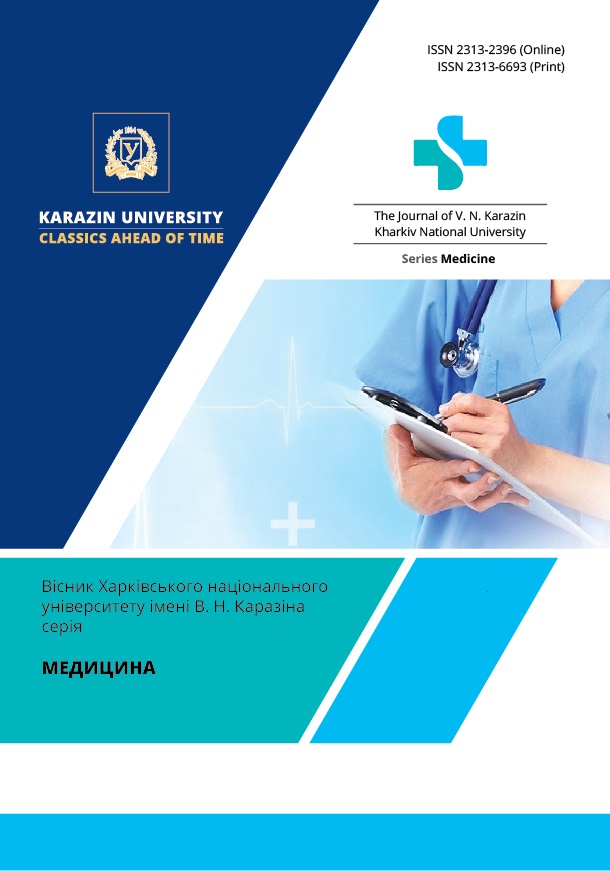Headache on the background of coronavirus infection: features of the clinical picture
Abstract
Introduction. Covid-19 has become a new problem of our time. Incidence in the world is rapidly increasing, and with it, attention to the study of the mechanisms of virus pathogenesis is increasing. New symptoms of SARS-CoV-2 persistence in the human body appear. It has been established that not only respiratory manifestations are observed in infected person, but neurological symptoms are increasingly coming to the fore. The main and common manifestation of Covid-19 infection is a headache in the pre- and post-Covid period. Determining the possible routes of entry of the pathogen into the nerve cell, establishing the specifics of Covid-associated headache remains an urgent problem in medicine. The aim of the study. To analyze the data of the world scientific literature regarding the possible mechanisms of invasion of the SARS-CoV-2 virus into the nervous system and their influence on the development of headache in the pre- and post-covid period. Materials and methods. A retrospective analysis of the literature of scientific databases Scopus, PubMed, MedLines, Web of Science for 2020-2022 was carried out. Results. The latest data of the researchers indicate the neurovirulence of the pathogen. SARS-CoV-2 infects humans using the angiotensin-converting enzyme 2 (ACE2) receptor, which is present in the olfactory region, cerebral cortex, basal ganglia, hypothalamus, brain stem, and endothelial cells. The detailed mechanisms of penetration into the central nervous system (CNS) have not yet been fully understood, but the following transmission routes are considered: through the olfactory nerve, the brain is subsequently affected, the second route is cellular invasion, infected monocytes and macrophages, which are a reservoir for the virus for further distribution to other tissues, the next mechanism is infection of endothelial cells of the blood-brain and epithelial blood-liquid barrier. The researchers explain the mechanism of the appearance of headache due to the direct invasion of the endings of the trigeminal nerve in the nasopharyngeal cavity, which leads to the activation of the trigeminal vascular system. Headache is observed at the beginning of the disease and can last more than 180 days after recovery. It is characterized as bilateral, compressive in nature, lasts for hours, resistant to conventional painkillers, intensifies in the morning, with coughing and physical activity. Conclusions. The SARS-CoV-2 virus causes infection using ACE2 receptors, some of which are localized in different parts of the central nervous system, causing neurological symptoms. Headache is one of the most pronounced symptoms of COVID-19, its characteristics and evolution may reflect various pathophysiological mechanisms, which makes their study necessary for a more thorough understanding of headache in the pre- and post-сovid period and the search for options for its elimination.
Downloads
References
The Human Protein Atlas. Available from: https://www.proteinatlas.org/ENSG00000130234-ACE2/brain
Varga Z, Flammer AJ, Steiger P, et al. Endothelial cell infection and endotheliitis in COVID-19 // Lancet 2020. Vol. 395 (10234). P. 1417 - 1418. DOI: https://doi.org/ 10.1016/S0140-6736(20)30937-5
Edoardo Caronna, Alejandro Ballvé, Arnau Llauradó, et al. Headache: A striking prodromal and persistent symptom, predictive of COVID-19 clinical evolution. Cephalalgia 2020 November; 40(13):1410-1421, DOI: https://doi.org/10.1177/0333102420965157
Migraine and Post-COVID Headache, American Migraine Foundation, February, 2022, Available from: https://americanmigrainefoundation.org/resource-library/migraine-post-covid-headache/
Bolay H, GuЁ l A and Baykan B. COVID-19 is a Real Headache! Headache 2020; 60: 1415–1421. DOI: https://doi.org/10.1111/head.13856
David García-Azorín MD, Javier Trigo MD, Blanca Talavera MD, et al. Frequency and Type of Red Flags in Patients With Covid-19 and Headache: A Series of 104 Hospitalized Patients. Headache, September 2020. Vol.60, P. 1664-1672 DOI: https://doi.org/10.1111/head.13927
César Fernández-de-las-Peñas, Marcos Navarro-Santana, Víctor Gómez-Mayordomo, et al. Headache as an acute and post-COVID-19 symptom in COVID-19 survivors: A meta-analysis of the current literature. European Journal of Neurology, November 2021, Volume28, P. 3820-3825, DOI: https://doi.org/10.1111/ene.15040
The Journal of V. N. Karazin Kharkiv National University, series Medicine has following copyright terms:
- Authors retain copyright and grant the journal right of first publication with the work simultaneously licensed under a Creative Commons Attribution License that allows others to share the work with an acknowledgement of the work’s authorship and initial publication in this journal.
- Authors are able to enter into separate, additional contractual arrangements for the non-exclusive distribution of the journal’s published version of the work, with an acknowledgement of its initial publication in this journal.
- Authors are permitted and encouraged to post their work online prior to and during the submission process, as it can lead to productive exchanges, as well as earlier and greater citation of published work.




